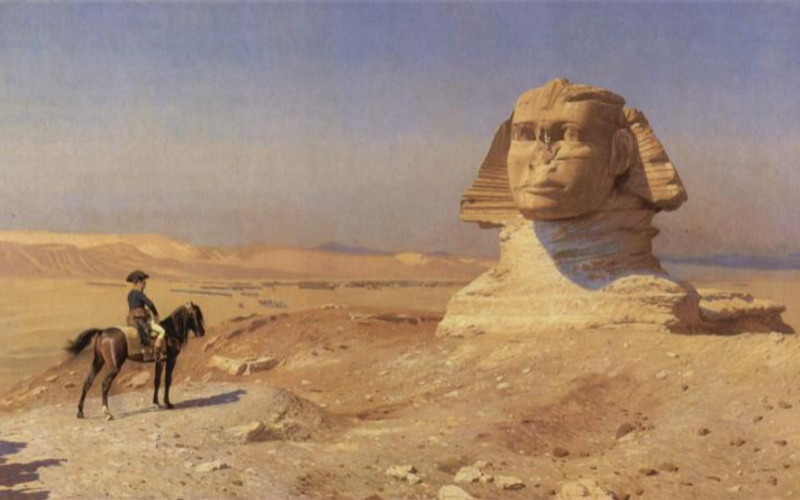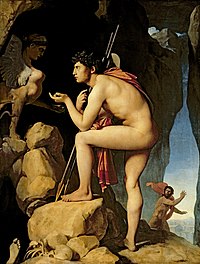The 1886 artwork Bonaparte Before the Sphinx by French artist Jean-Léon Gérôme depicts Napoleon in front of the Sphinx.
It also goes by the name Oedipus. It shows Napoleon Bonaparte during his campaign in Egypt, riding a horse up to the Great Sphinx of Giza and standing in front of his troops.
The picture was displayed at the 1886 Salon under the name “dipe,” alluding to the Oedipus and the Sphinx tale. It made Napoleon standing in front of the Sphinx a common subject for art and parody. It can be found at California’s Hearst Castle.
Oedipus and the Sphinx
In naming his piece Oedipus, Gérôme referred to both the narrative from antiquity and how other painters had depicted it.
In the myth, if they fail to solve a riddle set by the Sphinx, they will all perish while traveling to Thebes.
When the monster asked him: “What is it that has a voice and walks on four legs in the morning, on two at noon, and on three in the evening?” Oedipus answered that it was man, who as a child crawls on all fours, as an adult walks on two legs, and in old age uses a stick as a third leg.…The theme of [Ingres’s] work is the triumph of intelligence and of human beauty. But the scene is also one of man confronting his destiny since Oedipus’s exploit will lead to him becoming king of Thebes and marrying his mother Jocasta, as the oracle had predicted when he was born. It was a subject rarely portrayed from the end of the classical period until Ingres, but in the nineteenth century it came to fascinate many artists, most notably Gustave Moreau (1826-1898).
The New York Times praised Bonaparte Before the Sphinx as one of Gérôme’s best historical studies in its review of the Paris Salon of 1886.
The young Corsican, seated on his horse, is gazing in meditation upon the enormous enigmatic face of stone, that strange memorial of titanic ambitions, of forgotten sovereigns, of a vanished race. … The master has kept out all distracting details; even those I have mentioned are felt rather than observed, not even the Pyramids are shown – only the cloudless sky, the smooth sand, from whose drifts the gigantic visage rears itself and the solitary, self-communing man.
An American billionaire who is the stuff of legend would buy the painting:
Oedipus…imaginatively sets Napoleon in silent dialogue with the Sphinx, the young man of destiny confronted by the enigmatic gaze of a monument thousands of years old; intriguingly, this painting and its pendant, Bonaparte in Cairo, were to be bought by William Randolph Hearst in 1898.



